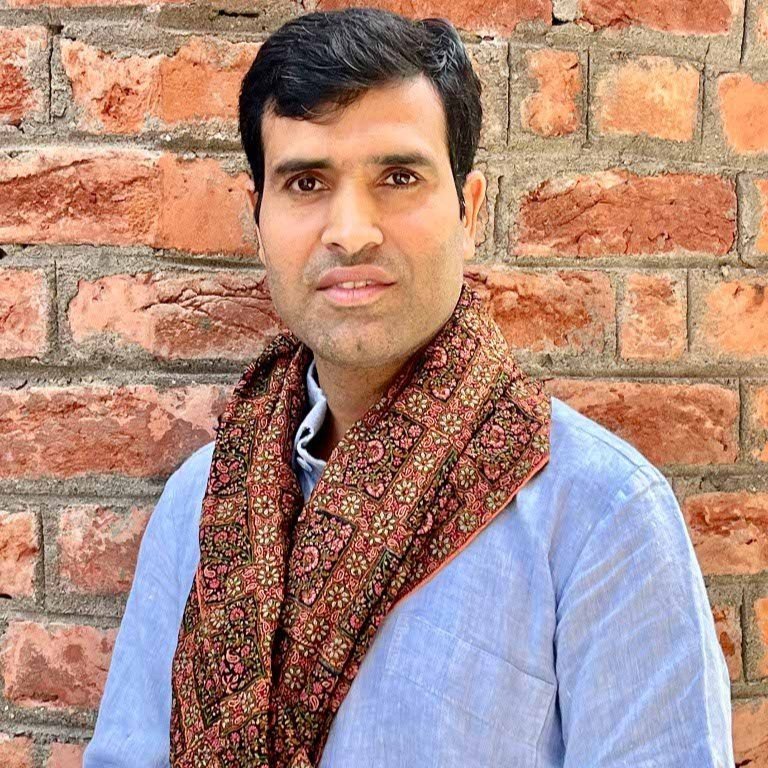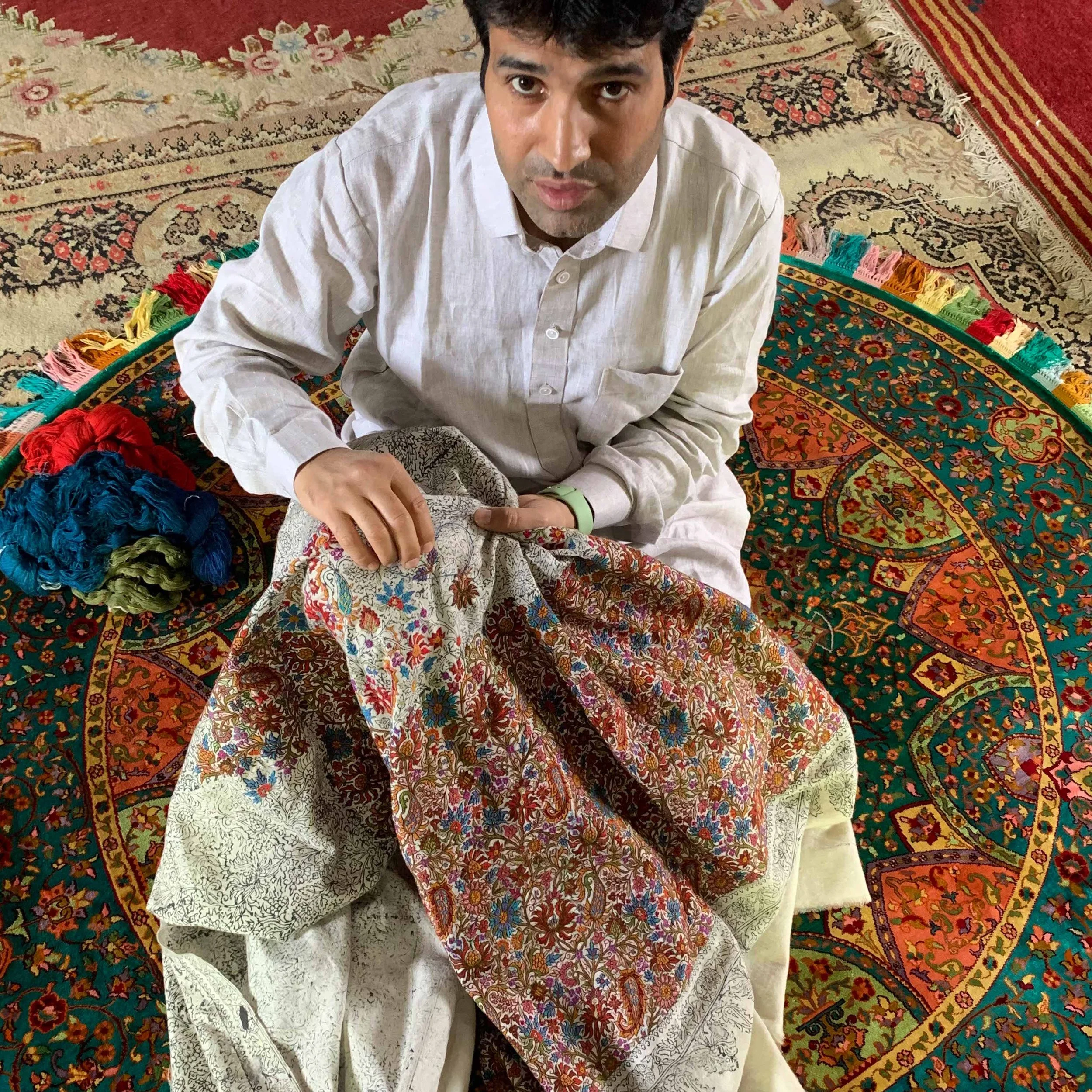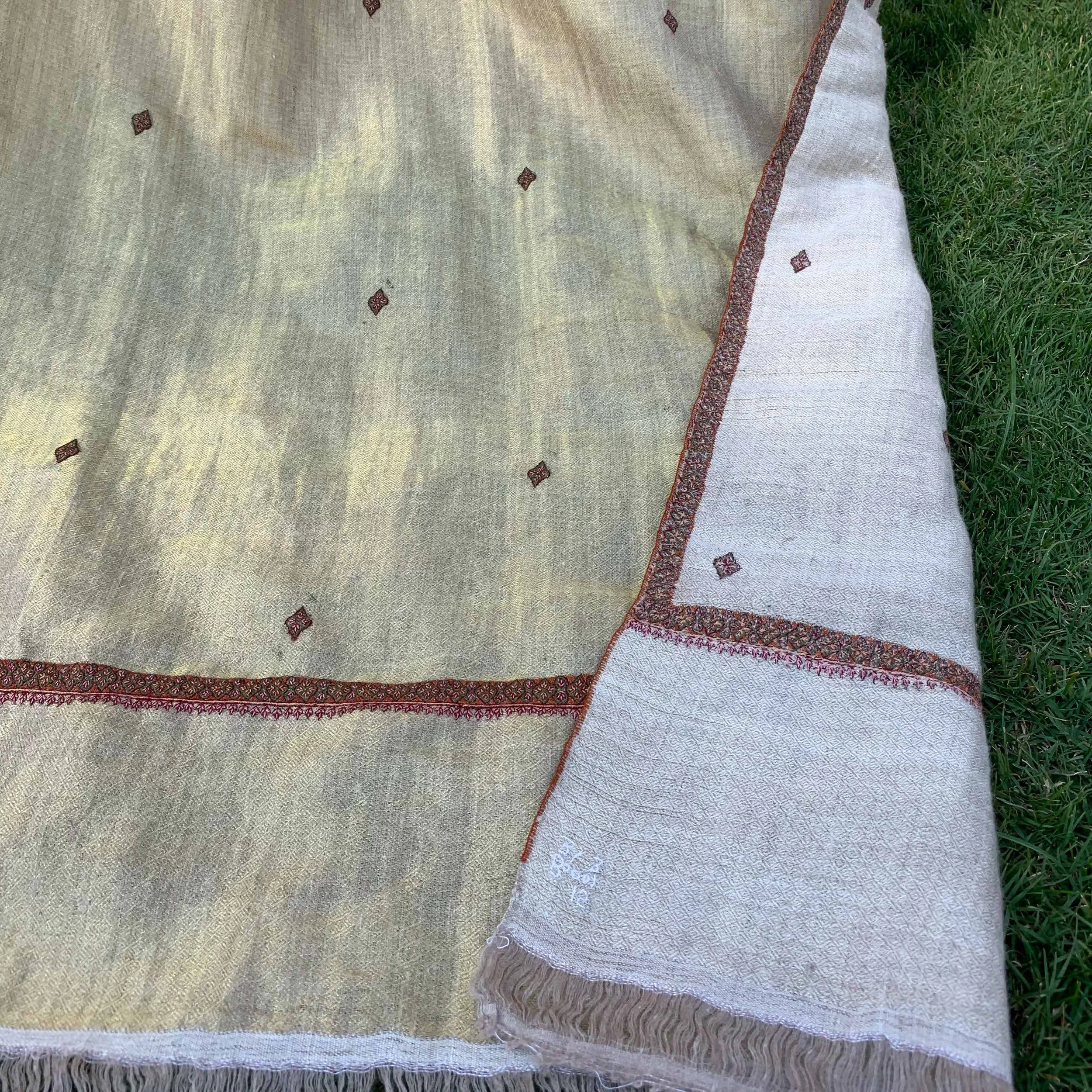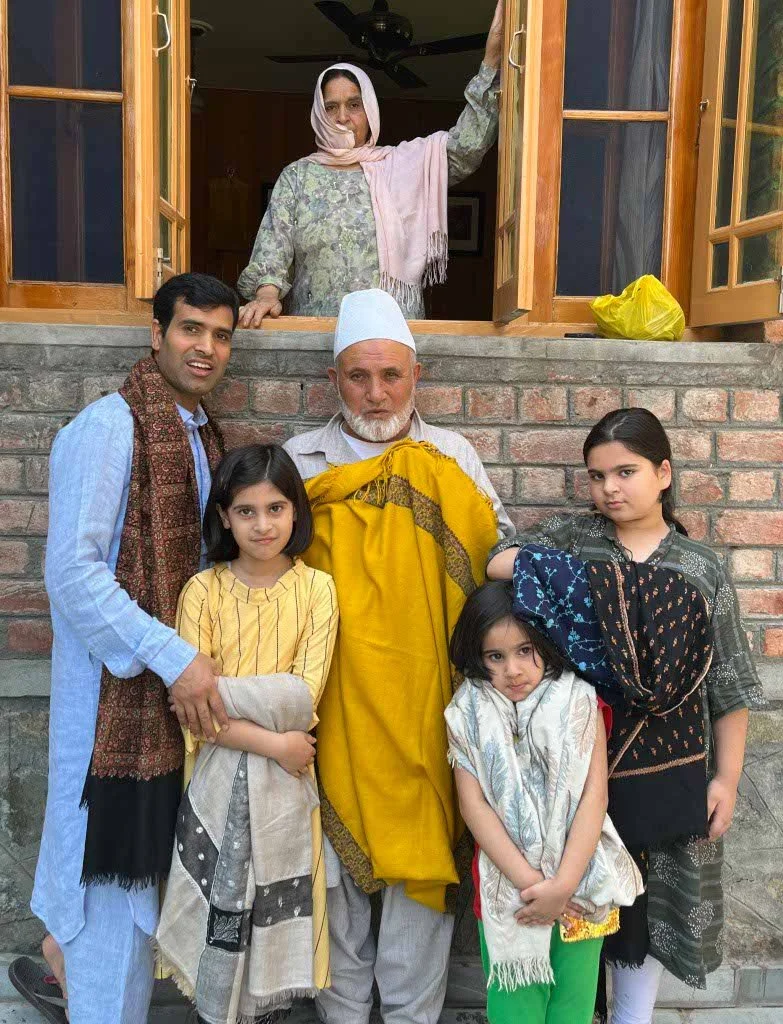Firdose Ahmad Jan
The Real Pashmina
The sumptuous textiles of eighth generation master weaver Firdose Ahmad Jan are beloved for their exquisite patterning and unparalleled softness. Extending a centuries-old artistic tradition, Jan, who lives and works with his family in the city of Srinagar in Kashmir, India believes strongly in the historical integrity and rich background of his artistic practice, which, after all, is believed to have first started with the Indus Valley Civilization. “I am lucky that I was born into a family where every member has passion to sustain and preserve this folk art for coming generations,” says Jan.
Pashmina shawls are not just named for the wool obtained from the pashmina goat, but for the unique process that makes them such. Artisans like Jan go through over 30 different steps when crafting a pashmina shawl. Jan is not only known for his attention to detail through each step, but also for his various motifs that adorn his shawls. Utilizing different embroidery methods like crewel, chain stitch/aari, sozani, and tilla, Jan depicts traditional motifs including badum (almonds), paisley, peacocks, deers, marigold, tulips, and daffodils.
Today, the weaving industry continues to play a vital role in the socioeconomic and cultural lives of Indian people, and this strong pride is why the pashmina shawl is famous throughout the world. Jan’s shawls are made on traditional wooden looms, using all-local materials from cashmere wool to organic dyes.
Jan was born into a veritable artistic dynasty, long respected for practicing this highly-prized artform. From the age of five years old, Jan began following in the footsteps of his creative ancestors, learning how to clean raw wool from his mother and receiving training in weaving and embroidery from his father, the Shilp Guru (an Indian award conferred upon a master craftsperson), Bashir Ahmad Jan. “My mother also supported my creativity later on,” explains Jan. “She always told me that to practice this folk art is not only a means of making a living, but also a means of serving God.”










